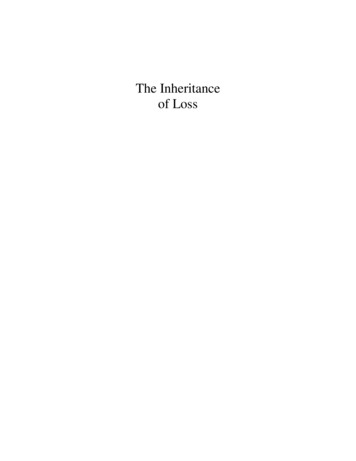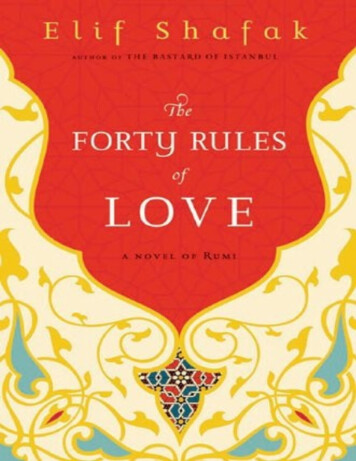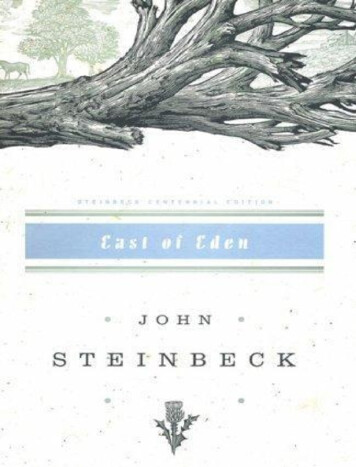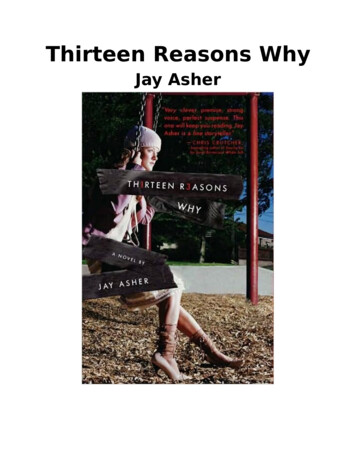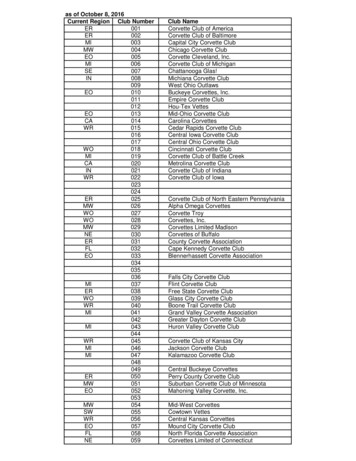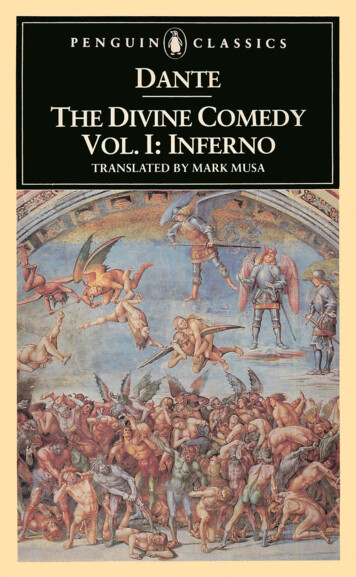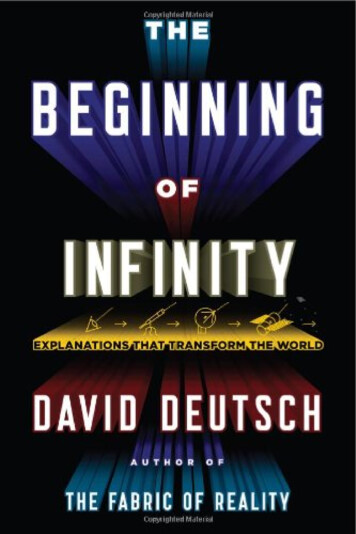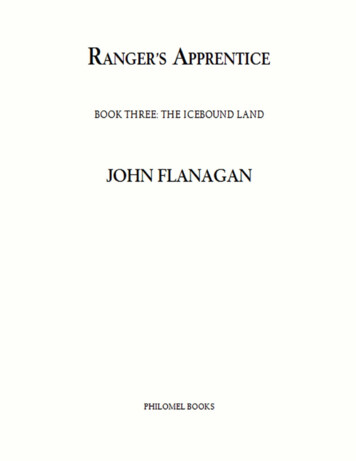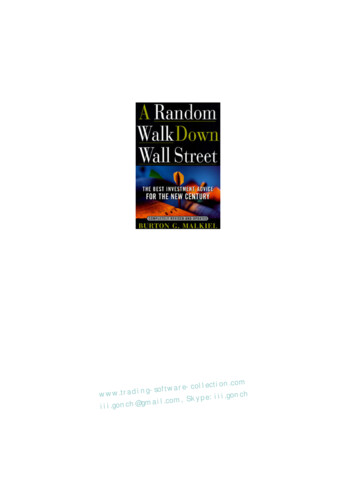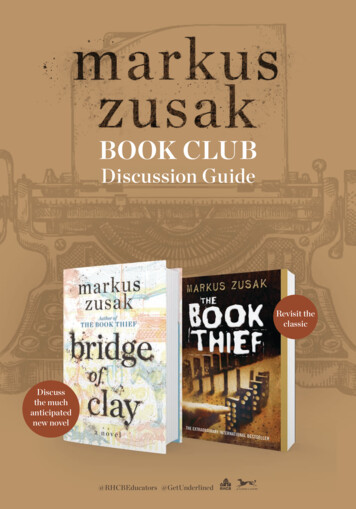
Transcription
BOOK CLUBDiscussion GuideRevisit theclassicDiscussthe muchanticipatednew novel@RHCBEducators @GetUnderlined
WELCOME TO THEBOOK CLUBThe Book Thief, one of the most enduring stories of our time, was published more thana decade ago and has been treasured by readers of all ages ever since. Since its release,Markus Zusak has been hard at work crafting a new masterpiece. Gather your bookclub friends to revisit the genius of The Book Thief or seize this moment to pick it up forthe very first time in anticipation of Bridge of Clay. In this guide, you will find questionsto spark a lively and thoughtful conversation about The Book Thief as well as the newworld of the Dunbar boys.THE BOOK THIEFThe Book Thief is “just a small story really, about, among other things: a girl, some words,an accordionist, some fanatical Germans, a Jewish fist fighter, and quite a lot of thievery.”It is 1939. Nazi Germany. The country is holding its breath. Death has never beenbusier, and will become busier still.Praise for THE BOOK THIEF“Brilliant and hugely ambitious.” —The New York Times Book Review“Zusak doesn’t sugarcoat anything, but he makes his ostensibly gloomy subjectbearable the same way Kurt Vonnegut did in Slaughterhouse-Five: with grim, darklyconsoling humor.” —TimeBRIDGE OF CLAYBridge of Clay is the breathtaking story of five brothers who bring each other up ina world governed by their own rules. As the Dunbar boys love and fight and learn toreckon with the adult world, they discover the moving secret behind their father’sdisappearance. At the center of the Dunbar family is Clay, a boy who will build a bridge—for his family, for his past, for greatness, for his sins, for a miracle. The question is, howfar is Clay willing to go?Elena Seiber tABOUT THE AUTHORMarkus Zusak is the author of the extraordinary internationalbestseller The Book Thief and I Am the Messenger, an LA TimesBook Award Finalist and a Printz Honor Book. He is therecipient of the Margaret A. Edwards Award for significant andlasting contribution to writing for teens, and lives in Sydney,Australia, with his wife and children.
DISCUSSION QUESTIONS FOR THE BOOK THIEF Discuss the symbolism of Death as the omniscient narrator of the novel. What areDeath’s feelings for each victim? Describe Death’s attempt to resist Liesel. Deathstates, “I’m always finding humans at their best and worst. I see their ugly andtheir beauty, and I wonder how the same thing can be both.” (p. 491) What is uglyand beautiful about Liesel, Rosa and Hans Hubermann, Max Vandenburg, RudySteiner, and Mrs. Hermann? Why is Death haunted by humans? What is ironic about Liesel’s obsession with stealing books? Discuss other uses ofirony in the novel. The Grave Digger’s Handbook is the first book Liesel steals. Why did she take thebook? What is significant about the titles of the books she steals? Discuss why shehides The Grave Digger’s Handbook under her mattress. Describe Hans Hubermann’sreaction when he discovers the book. What does the act of book thievery teachLiesel about life and death? Explain Rudy’s reaction when he discovers that Lieselis a book thief. How does stealing books from the mayor’s house lead to a friendshipwith the mayor’s wife? Explain how Liesel’s own attempt to write a book savesher life. Liesel believes that Hans Hubermann’s eyes show kindness, and from the beginningshe feels closer to him than to Rosa Hubermann. How does Hans gain Liesel’s loveand trust? Debate whether Liesel is a substitute for Hans’s children, who havestrayed from the family. Why is it so difficult for Rosa to demonstrate the samewarmth toward Liesel? Discuss how Liesel’s relationship with Rosa changes by theend of the novel.
Abandonment is a central theme in the novel. The reader knows that Liesel feelsabandoned by her mother and because of the death of her brother. How does sheequate love with abandonment? At what point does she understand why she wasabandoned by her mother? Who else abandons Liesel in the novel? Debate whethershe was abandoned by necessity or choice? Guilt is another recurring theme in the novel. Hans Hubermann’s life was sparedin France during World War I, and Erik Vandenburg’s life was taken. Explain whyHans feels guilty about Erik’s death. Guilt is a powerful emotion that may cause aperson to become unhappy and despondent. Discuss how Hans channels his guiltinto helping others. Explain Max Vandenburg’s thought, “Living was living. Theprice was guilt and shame.” (p. 208) Why does he feel guilt and shame? Compare and contrast the lives of Liesel and Max Vandenburg. How does Max’s lifegive Liesel purpose? At what point do Liesel and Max become friends? Max givesLiesel a story called “The Standover Man” for her birthday. (p. 223) What is thesignificance of this story? Death says that Liesel is “a girl with a mountain to climb.” (p. 86) What is hermountain? Who are her climbing partners? What is her greatest obstacle? At whatpoint does she reach the summit of her mountain? Describe her descent. What doesshe discover at the foot of her mountain? Hans Junior, a Nazi soldier, calls his dad a coward because he doesn’t belong to theNazi Party. He feels that you are either for Hitler or against him. How does it takecourage to oppose Hitler? There isn’t one coward in the Hubermann household.Discuss how they demonstrate courage throughout the novel. Describe Liesel’s friendship with Rudy. How does their friendship change and growthroughout the novel? Death says that Rudy doesn’t offer his friendship “for free.”(p. 51) What does Rudy want from Liesel? Discuss Death’s statement, “The onlything worse than a boy who hates you [is] a boy who loves you.” (p. 52) Why is itdifficult for Liesel to love Rudy? Discuss why Liesel tells Mr. Steiner that she kissedRudy’s dead body. How does Zusak use the literary device of foreshadowing to pull the reader intothe story? Liesel Meminger lived to be an old woman. Death says that he would like to tell thebook thief about beauty and brutality, but those are things that she lived. How doesher life represent beauty in the wake of brutality? Discuss how Zusak’s poeticwriting enhances the beauty of Liesel’s story.
GET READY FOR BRIDGE OF CLAYNow that you have read (or reread) The Book Thief, round out your discussion by talkingabout Markus Zusak’s new novel, Bridge of Clay.PRE-READING The character development in The Book Thief is truly remarkable—Liesel and Maxjump off the page. What types of characters and relationships are you expecting tosee in Bridge of Clay? Death as omniscient narrator is one of the most recognizable and distinctiveaspects of The Book Thief. What do you think will stand out in the new novel? Why do you think Clay is building this bridge? The cover is a collage of a number of images. How do you think they relate tothe story?ARE YOU READYTO MEET THEDUNBAR BOYS?Break the seal forBridge of Clay–specificdiscussion questions.SPOILERS AHEAD!
DISCUSSION QUESTIONS FOR BRIDGE OF CLAY The book starts with a striking scenario: “In the beginning there was one murderer,one mule and one boy . . .” What expectations did this give you for the novel? Do youthink this is representative of the story as a whole? Penny’s and Michael’s upbringings are very different. Do you see reflections of theirchildhoods in the way they choose to bring up the boys? What do you think was thepurpose of focusing on their family history? Each of the Dunbar brothers seems to be connected to one of the pets. Can you drawconnections between these relationships and the animals’ literary names? Why are Michael, and later Clay, determined to build the bridge? Do you believe thatthey are doing it for different reasons? Clay and Carey’s relationship is a cornerstone of his story—why do you think he wasable to tell her things that he couldn’t tell his brothers? How do you think her deathaffected the remainder of his story? Readers go over the story of Penny’s death a few times throughout the later sectionsof the narrative. What more do we learn about her character and about how herpassing transformed all the boys? How do each of the boys react?
On pg. 9, Matthew says:“Let me tell you about our brother.The fourth Dunbar boy named Clay.Everything happened to him.We were all of us changed through him.”Discuss the changes this is referring to. How are each of the boys different by theend of the story? The action that makes up the bulk of the novel has already happened when Matthewtells us the story. Were you still surprised by the conclusion and where all the boysended up? At first it is not clear why Matthew is narrator, but later on (pg. 490) he says:“For starters, this story wasn’t over yet.And even then, it wouldn’t be him.The story was his, but not the writing.It was hard enough living and being it.”Why do you think it was important to tell this story? What can you assume aboutMatthew’s relationship with Clay following the events in the book? Bridge of Clay is about the complexity of the relationships within the Dunbar family.As you read their story, did you find anything relatable? Was there anything youfound hard to empathize with? Markus Zusak has said: “Bridge of Clay is about Clay Dunbar, who builds a bridge tohonor his parents. . . . He builds a bridge for his brothers, but he’s also building thebridge for himself. That’s his one attempt at greatness. And I think he really wantsto produce a miracle as a kind of cure for the tragedies he’s endured, and he wants tomake one great thing to transcend humanness. I think at the end of the day, even ifhe falls short, he just wants it to be a great attempt, and that to me is what the bookis really about.” How do you assess Clay’s “great attempt”?
The much anticipated new novel from the#1 New York Times bestselling author ofTHE BOOK THIEFLet me tell you about our brother.Everything happened to him.We were all of us changed through him.Text 2018 by Markus ZuzakThe fourth Dunbar boy named Clay.
to spark a lively and thoughtful conversation about The Book Thief as well as the new world of the Dunbar boys. THE BOOK THIEF The Book Thief is “just a small story really, about, among other things: a girl, some words, an accordionist, some fanatical Germans, a Jewish fist fighter
